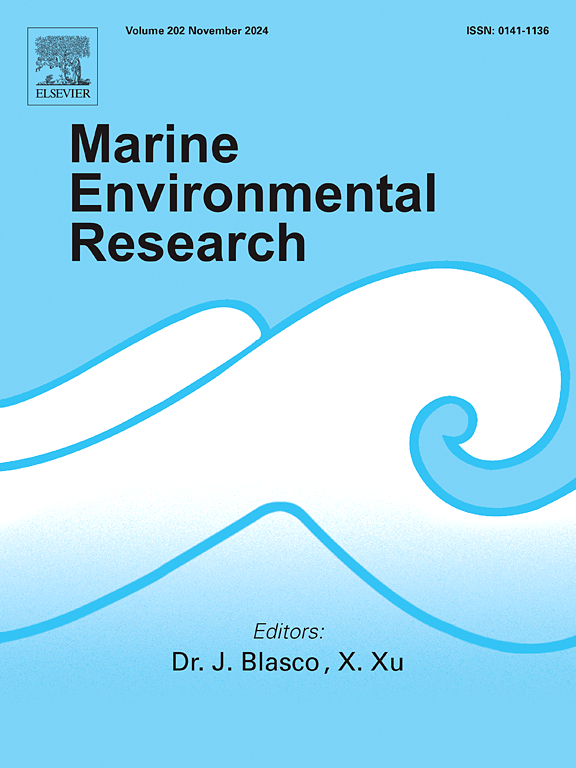Non-methane hydrocarbons in the continental seas of China: Spatiotemporal variability, controlling factors, and environmental effects
IF 3
3区 环境科学与生态学
Q2 ENVIRONMENTAL SCIENCES
引用次数: 0
Abstract
Coastal regions, as hotspots for non-methane hydrocarbons (NMHCs) emissions, warrant more consideration for their vital impacts on marine climate regulation. This study examined the spatiotemporal distributions, emissions, and environmental effects of NMHCs in the Bohai Sea (BS) and Yellow Sea (YS) during summer and winter. The NMHC concentrations show clear spatial and seasonal variability, with higher levels observed in summer. The horizontal distributions of isoprene closely mirrored chlorophyll-a (Chl-a), suggesting a strong linkage to phytoplankton activities, while other NMHCs appeared to be associated with photochemical processes. Atmospheric alkane concentrations declined from inshore regions to offshore regions indicating the significant input of terrestrial sources, whereas alkenes were predominantly emitted from the ocean. The NMHC sea-to-air fluxes ranged from 11.8 to 306 nmol m−2 d−1, underscoring the importance of coastal regions as major sources of atmospheric NMHCs. These emissions significantly promote the formation of secondary organic aerosol (SOA) and ozone (O3), thereby exerting a vital impact on the marine environment.
求助全文
约1分钟内获得全文
求助全文
来源期刊

Marine environmental research
环境科学-毒理学
CiteScore
5.90
自引率
3.00%
发文量
217
审稿时长
46 days
期刊介绍:
Marine Environmental Research publishes original research papers on chemical, physical, and biological interactions in the oceans and coastal waters. The journal serves as a forum for new information on biology, chemistry, and toxicology and syntheses that advance understanding of marine environmental processes.
Submission of multidisciplinary studies is encouraged. Studies that utilize experimental approaches to clarify the roles of anthropogenic and natural causes of changes in marine ecosystems are especially welcome, as are those studies that represent new developments of a theoretical or conceptual aspect of marine science. All papers published in this journal are reviewed by qualified peers prior to acceptance and publication. Examples of topics considered to be appropriate for the journal include, but are not limited to, the following:
– The extent, persistence, and consequences of change and the recovery from such change in natural marine systems
– The biochemical, physiological, and ecological consequences of contaminants to marine organisms and ecosystems
– The biogeochemistry of naturally occurring and anthropogenic substances
– Models that describe and predict the above processes
– Monitoring studies, to the extent that their results provide new information on functional processes
– Methodological papers describing improved quantitative techniques for the marine sciences.
 求助内容:
求助内容: 应助结果提醒方式:
应助结果提醒方式:


